The simple answer is yes! You can ride a hoverboard on grass. Hoverboards should handle most terrains, but this raises the question of whether you can ride a Hoverboard on grass. If you’re thinking about buying one for yourself, we want to help make sure that you’re prepared to ride it just as safely as possible.
In this article, we answer your question about the possibility of riding a Hoverboard on grass, and we clearly show the pros and cons of riding your hoverboard on grass. We provide details about factors to consider before picking a suitable Hoverboard for different surfaces and conclude by showcasing those factors that make Hoverboards ideal for outdoor use.
Can You Ride a Hoverboard On Grass?
In general, yes, you can ride a hoverboard on grass, gravel, or dirt. However, it will depend on which Hoverboard you get. Some models of hoverboards are better than others; some are not meant to be used off-road and might not live up to your expectations if used in off-road terrain.
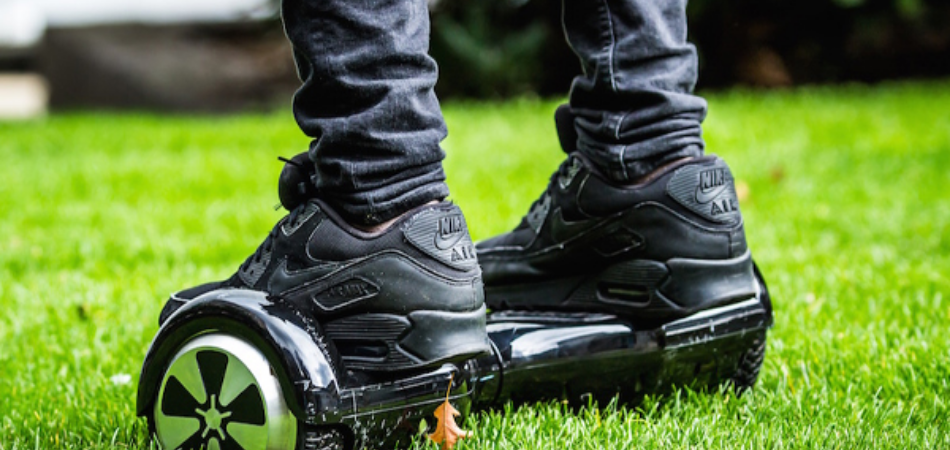
Pros And Cons Of Riding Hoverboard On Grass
Of course there are pros and cons to riding your hoverboard on grass. After going through them, you’ll be better informed on any decision you choose to take.
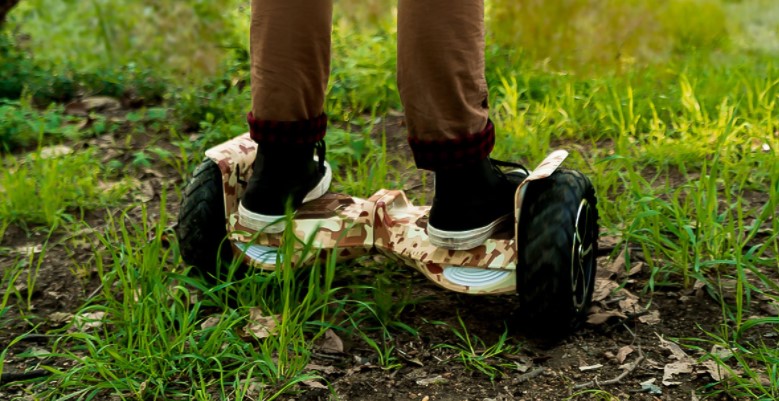
We’ll try to explain the pros and cons as simply as possible so that the decision to ride a hoverboard on grass becomes easier for you.
Pros:
- People may feel more secure when riding a hoverboard on grass than when they are riding it inside the house or another closed area. This is because they know that they have enough room to stop or change their direction if something unexpected happens. However, if they choose to ride their Hoverboards indoors, they may face serious injuries from falling or hitting walls or furniture.
- It’s fun. A Hoverboard is fun to ride, and when you’re having fun, you will be too distracted to think about falling off. That doesn’t mean you won’t fall off, but it means you’re more likely to enjoy yourself while you’re falling off.
- The grass cushions your fall. The grass will break your fall if you happen to fall off your Hoverboard. And even if it doesn’t ruin your fall completely, the blades of grass will cushion the blow somewhat and make sure that nothing gets broken that shouldn’t be broken.
- Traction matters. Most people tend to think of a Hoverboard as an air-bound vehicle, but in fact, it is much easier to control when touching the ground than when hovering above it. This is mostly because of friction; the grass keeps you from slipping out from under the machine, so you can lean into turns more and accelerate more quickly without worrying about falling over.
- Riding it on other surfaces, such as concrete, can affect its performance and lifespan. You also risk damaging the surface.
- The grass is soft, so you don’t need to worry about damaging or wearing out parts of your board. As long as you don’t go too fast and don’t jump off, you can ride for hours without worrying about breaking anything.
Cons:
- Hoverboard technology depends on a certain level of conductivity for the components to function properly. Water, dirt, and any other sources of moisture can interfere with this conductivity.
Although some people will argue that water is everywhere, after all, It rains, snow falls and even perspiration contains a small amount of water. At some point or another, your Hoverboard will get wet. However, although it is a good move to purchase a protective/waterproof cover for your Hoverboards, everyone will agree that keeping the Hoverboard away from grass is better to save it from water, dust, and dirt. These abundant elements can also harm the system if allowed to get in.
- Hoverboards can handle most surfaces, but that doesn’t mean they can take all of them. You’ll probably have the most fun on smooth, flat surfaces. But even there, you’ll still want to be careful.
Even though hoverboards are full of computer chips and sensors, they don’t get along with every kind of surface. They work best on smooth surfaces like asphalt and concrete, and even then, a tough landing might cause some damage to your Hoverboard and yourself.
If you’re thinking about taking your Hoverboard for a spin in the park, it’s worth knowing that grass is not as great as it looks. Yes, riding a hoverboard on grass looks cool. It also looks easy and fun. And it can be this way sometimes. But if you don’t know what you’re doing, you’re risking disaster. People, however, have managed this situation by preparing their Hoverboard for grass: making sure its tires are free of dirt and debris from previous rides; because they realize that, otherwise, their Hoverboard will keep sinking into the ground instead of gliding over it. In addition, they manage to keep an eye out for uneven surfaces or bumps in the grass. There might be hidden rocks or loose parts of the surface that may suddenly cause the ride to lose control.
Factors To Be Considered When Riding On Grass
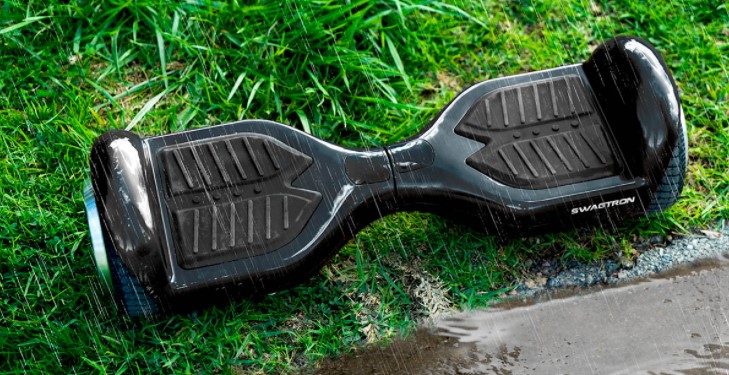
Determine If A Hoverboard Has The Recommended Wheels For Riding On Grass
Although it is possible to find a board capable of handling rougher terrain, the tires of normal hoverboards are built for smooth pavement. If you attempt to use your Hoverboard on gravel, rocky landscapes, or grass, the tires will wear out quickly, and you will be forced to replace them.
Hoverboards with larger wheels can handle rougher terrain better than smaller wheeled boards. Because the larger wheels give more surface area to grab onto various terrains and conditions, they can take more uneven terrain. Taller boards with larger wheels also have better weight distribution which helps prevent tipping during turns.
You can look at the product descriptions and hoverboard reviews to determine if a hoverboard has the recommended wheels for riding on grass.
Many people who buy hoverboards think they can handle rough terrain while riding. However, many riders do not realize that there are different versions of hoverboards specifically designed for different terrains and conditions.
If you live in an area with rough terrain or plan to use your Hoverboard for an activity like trick riding in tough conditions, it is best to get a board with larger wheels meant for rough terrain. Using a hoverboard designed for rough terrain will extend the life of your tires and make riding more.
Tires Made Of Solid Rubber Have Several Advantages Over Air-Filled Tires
As we know, hoverboards with air-filled tires have become increasingly popular. A standard hoverboard may have four tires — two on the edges and two inside, with an axle running through the middle. The outer tires are solid rubber, while the inner tires are smaller and lighter gas.
Tires made of solid rubber have several advantages over air-filled tires. They tend to be more durable and puncture-resistant, which means you’ll spend less time replacing them. They can handle rougher terrain better because the rubber conforms better to bumps and uneven surfaces. And they’re often lighter weight than air-filled tires, which means it takes less energy to accelerate or decelerate or change direction. This advantage is sometimes offset by the extra weight of a heavier hoverboard frame.
The downside is that solid rubber tires are harder to manoeuvre on smooth surfaces like floors or tile; they also don’t perform well when travelling at high speeds on flat surfaces. On the other hand, air-filled tires make it easier to get up to top speed, but they’re not as good for handling sharp curves or rugged environments.
Dedicated Off-Road Hoverboards Usually Have Higher Power Motors
If you live in an area where there is a lot of on-road and off travel, such as the city, you might want to invest in a hoverboard that has a main battery of at least 400Wh. A 400Wh battery would allow you to reach speeds of around eight mph and cover distances of up to 12 miles.
Dedicated off-road hoverboards usually have higher power motors if this is your intended use. Off-road boards tend to be bigger than on-road boards because they need extra torque to help them climb hills more easily and handle rougher terrain.
The Hoverboard’s battery is one of the most important things to consider when choosing your board. Although most hoverboards will come with different battery sizes ranging from 250Wh to 500Wh, it is always good practice to understand exactly what you need before purchasing.
Dust And Water Protection For Hoverboards
We recommend a hoverboard dust and water protection kit. This is a complete set of accessories designed to protect your Hoverboard from dust, dirt, mud and water. A hoverboard gives you the freedom to go places you have never been, but it comes at the cost of getting dirty and wet.
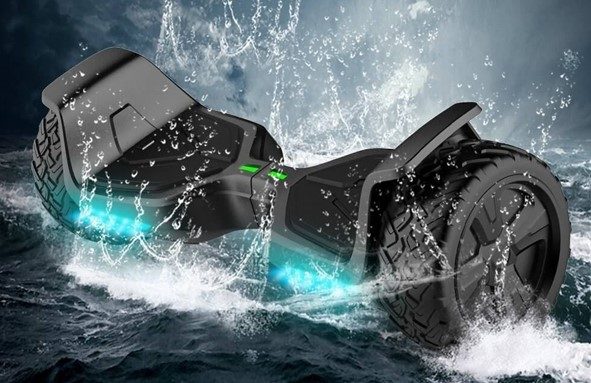
Sometimes, even with specially made hoverboards, trying to ride on gravel, grass, or dirt may cause damage to its body and tires. Rock is especially dangerous because it can rip up the tires of some hoverboards and damage its internal components like its batteries. Grass, dirt and water can get into the smallest cracks, which can cause rust which can lead to permanent damage.
A dust and water protection kit includes everything you need to keep your Hoverboard clean and safe from damage caused by riding on rough surfaces. It should have a removable waterproof cover for the Hoverboard, mudguards for the wheels, a flexible screen protector designed to protect the LED lights on the front of your board, and other utility tools.
Protect Your Hoverboard Against Physical Contact
Your Hoverboard must also have a strong casing to keep the overboard safe from impact, drops and flying gravel.
Your Hoverboard must be rated at least IPX4. The IP rating lets you know how protected your Hoverboard is against contact with water and dirt particles. IPX4 means that your Hoverboard can handle being submerged in up to 1 metre of water for about 30 minutes without any damage occurring to its inner components. This is fine if it happens once or twice, but if your Hoverboard runs into the water more than this, then it’s not going to last very long.
The All-Terrain Hoverboard Is An Extremely Useful Product
They work great, even on grass and dirt. This type of Hoverboard comes with wheels made of strong materials, allowing it to maintain its shape and capacity.
Treat your riding experience with care by using the all-terrain Hoverboard for protection. It has a solid tire that can let it roll over hard surfaces without being damaged. It also helps to protect your board from impact when you fall off.
What Makes A Hoverboard Suitable For Outdoor Use?
Suitable Hoverboards feature heavy-duty frames and components that can take on any terrain, rain or shine. A heavy duty hoverboard for adults which delivers speed, stability, and range when navigating curves, climbing hills, and tolerating pebbles and bumps.
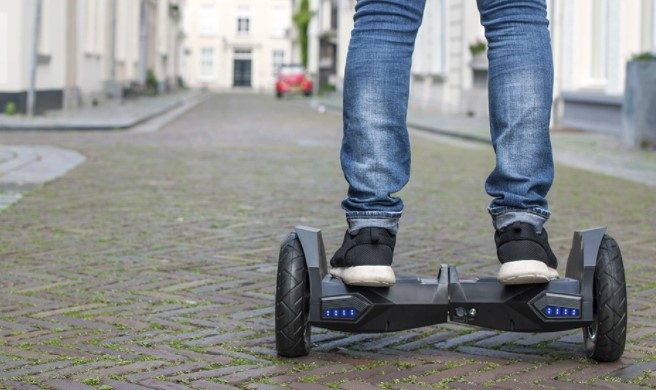
It’s a common misconception that hoverboards are only suitable for indoor use. That’s true of most models, which use small, weak motors and cheap components. But if you’re looking for a balance board that can handle outdoor terrain, you’ll want to consider the off-road Hoverboard.
Looking at an off-road hoverboard, you should check whether it has knobbly tires. These are better suited to rough terrain than smooth wheels and can even help you move through snow and soft sand.
If you’re using your board just on hard surfaces, then smooth wheels will probably suffice – though they may wear down more quickly than knobbly ones.
Traction
Traction is one of the most important factors when it comes to off-road hoverboard use. It is quite difficult to ride off-road with a hoverboard if there is low traction. A good quality hoverboard should have a wheelbase that can work well on all types of terrains such as grass, asphalt, dirt and sand. The wheels should also be wide enough not to be stuck in mud, snow or ice.
Tire type
The tires used in off-road hoverboards are also different from those in normal hoverboards. They are made with strong rubber and can withstand wear and tear caused by continuous friction with the ground while moving at high speeds.
The tire treads are designed to grip uneven surfaces like snow, water and mud without slipping or sliding.
Normal hoverboards use tire treads designed for smooth floor surfaces, so they don’t slip on tile or wood floors, but these types may not perform well on rough terrains.
Wheel size
Hoverboards with bigger wheels can move more smoothly over uneven terrains, which gives the rider a comfortable experience. Bigger wheels also mean better grip.
Conclusion
The information above should clear up any lingering doubts you might have about riding a hoverboard on grass. You should now be able to do so–but always make sure a warranty still covers that your board and remember to take extra precautions if you don’t want to scuff your self-balancing board or get stuck at the park. Good luck!